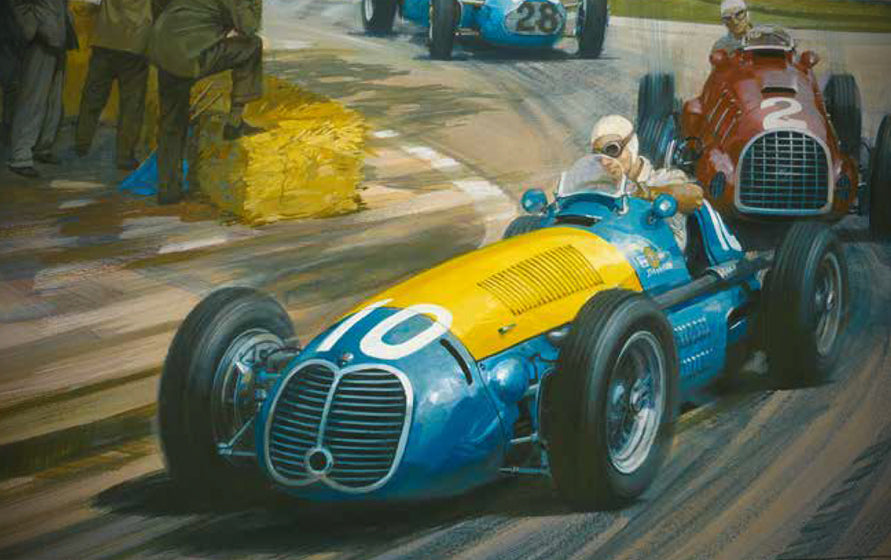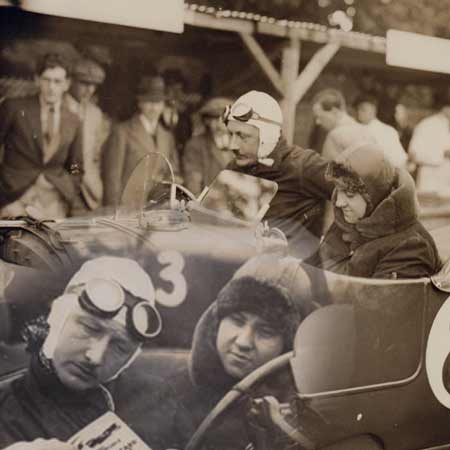
How nationalism and an iron-fisted ruler put Fangio on the world stage

It’s an uncomfortable truth, but the springboard to Juan Manuel Fangio’s five World Championships was provided by an army general-turned-President who welcomed Nazi war criminals into his country and oppressed political opponents with intimidation and violence. That iron-fisted ruler was Juan Perón, who saw sport as a way of building national pride, and who in the late 1940s instructed the Automóvil Club Argentino (ACA) to purchase a fleet of racing cars to wave the national flag. Perón hoped this investment would enable Argentine drivers to demonstrate their world-class talents against foreign competition, and Fangio did exactly that.

The ACA’s spending spree allowed a small number of racing drivers to play with a state-funded toy box containing, at one time or another, two Maserati 4CLTs, two Simca-Gordini T15s, and later also two Ferrari 166 FLs. Irresistible temptations, you might think, to any budding racing driver, but not all were comfortable about the implied association with Perón. One doubter was Benedicto Campos, who Fangio personally selected as his team-mate for his first season in Europe in 1949. Campos scored two third places that year in an ACA-acquired Maserati 4CLT, in the Grand Prix du Roussillon and the Pau Grand Prix, and until sidelined by engine trouble he also led the French Grand Prix at Reims – but at season’s end he chose to return to racing stock cars in Argentina because he never wanted to thank Perón publicly.

A more enthusiastic ACA benefactor, in 1950, was José Froilán González. ‘The Pampas Bull’ progressed to Maserati and then Ferrari, winning Le Mans in 1954 in a Ferrari 375 Plus (shared with Maurice Trintignant) and giving Enzo’s marque its first World Championship F1 victory in the British Grand Prix at Silverstone that year. Also in 1954, González was runner-up in the driver’s title race – to Fangio. Perón’s grand ambition had led to a great result.
González was unashamed of who had put him in the spotlight. He once said, somewhat contradictorily: ‘I was apolitical, but always a Peronist.’ There were strong reasons for an Argentine racing driver to be a Peronist, of course, and not just because of the cars. As González revealed: ‘Once Perón asked me if we needed anything, so we told him a circuit! And then Perón built the Autódromo de Buenos Aires.’

Fangio was as well known for his gentlemanly diplomacy as his other-worldly speed, and through this political minefield he stepped skilfully. The two ACA-acquired Maserati 4CLTs campaigned in 1949 by Fangio and Campos ran in the bright blue and yellow colours of Argentina, but any risk of seeming overly nationalistic was tempered by naming the team ‘Equipo Argentino Achille Varzi’ in memory of the Italian driver killed in an Alfa Romeo 158 the previous year. In fact, the Maseratis were prepared near Milan on premises belonging to Achille’s father, Menotti – a sentimental choice of location, perhaps, but also a practical one, equipped with the tools needed for car preparation and putting the team within reasonable reach of most of that season’s venues.
For Fangio, it was the breakthrough season. By winning the Gran Premio di San Remo, Pau Grand Prix, Grand Prix de Roussillon, and Grand Prix d’Albi, he clearly demonstrated the sort of ability coveted by factory-run teams. In 1950 Fangio was recruited by Alfa Romeo, by 1951 he had taken his first World Championship, and between 1954 and 1957 he scooped-up four more. In that fifth and final title-winning year, Fangio won four of the eight World Championship rounds in a 250F: the wheel had turned full circle, his international career starting and concluding at the wheel of a Maserati.
The story of the two ACA Maserati 4CLTs, and of one of those cars in particular, is told in the latest addition to our Exceptional Cars series: Maserati 4CLT – The remarkable history of chassis no. 1600. Written by Cristián Bertschi, a specialist in tracking the history of cars of this era, the book also looks at how the 4CLT was developed from the pre-war 4CL, how Maserati moved up from the voiturette category to Formula 1 as the foremost supplier of cars to private teams, and how 1600 was re-discovered in Argentina (where it had been fitted with a Ford V8) and rebuilt before settling back in Europe in historic racing. Profusely illustrated, with many previously unpublished photographs, this book also profiles the men who raced 1600 in period: Campos, González, Fangio’s ill-fated protégé Onofre Marimón, and of course the great Fangio himself.
By Phillip Bingham







Leave a comment
This site is protected by hCaptcha and the hCaptcha Privacy Policy and Terms of Service apply.